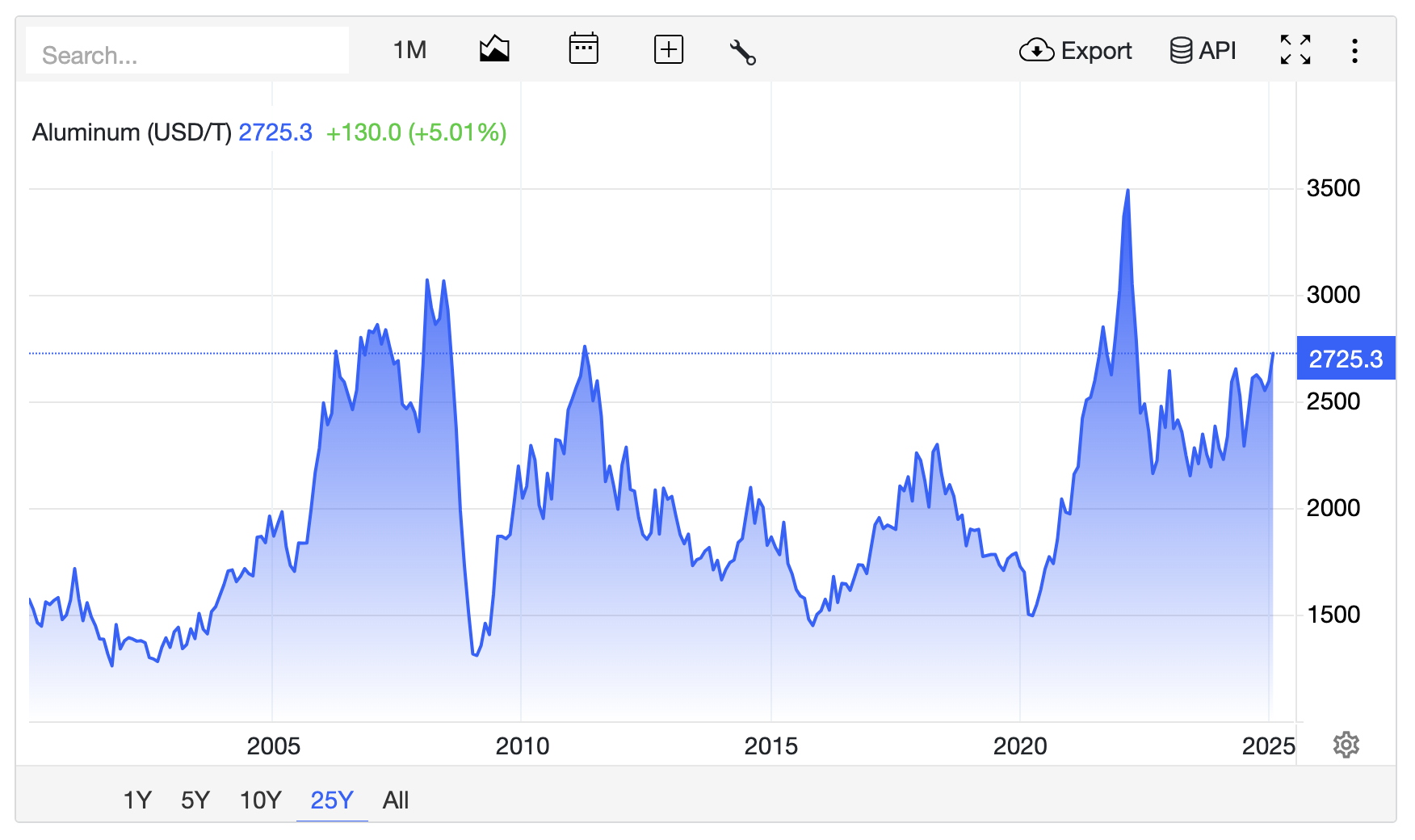Aluminium Hits 9-Month High, $2,700/ton
- This topic has 4 replies, 1 voice, and was last updated 1 month ago by .
-
Topic
-
Aluminium futures have surged past $2,700 per tonne in February 2025, reaching their highest level in nine months, driven by a combination of constrained supply and an improving demand outlook.
China’s aluminium production hit a record 44 million tons in 2024, but its growth is expected to slow significantly this year due to Beijing’s longstanding cap of 45 million tons, imposed in 2017 to combat overcapacity and reduce carbon emissions.
This production ceiling is likely to tighten global supply further, especially as China’s aluminium exports are projected to drop by as much as 9% in 2025 following the removal of tax rebates that had incentivised overseas sales.
On the demand side, signs of economic recovery are bolstering optimism.
In the US, the ISM manufacturing index showed unexpected growth in January, marking the first expansion in over two years.
This rebound could support higher aluminium consumption in industrial applications.
Meanwhile, China’s fiscal stimulus measures and improving credit growth are expected to drive domestic demand for commodities like aluminium.
Geopolitical factors are also playing a significant role in shaping the market.
The European Union has reiterated plans to impose additional sanctions on Russian aluminium, while the US has threatened a 25% tariff on imports of the metal.
These developments could further constrain global supply and push prices higher.
Elsewhere, Europe’s aluminium sector remains under pressure after significant capacity was taken offline during the energy crisis.
While some restarts have occurred, high alumina prices and subdued demand recovery—particularly in construction and transportation—are limiting further production increases.
Analysts at ING project a global aluminium market deficit of around 400,000 tonnes in 2025, following a surplus of approximately 100,000 tonnes last year.
The combination of supply restrictions, geopolitical tensions, and recovering demand suggests aluminium prices could remain elevated in the near term.
However, risks such as potential disruptions to China’s hydropowered production or slower-than-expected capacity restarts outside China could exacerbate supply tightness further.

Source: Trading Economics